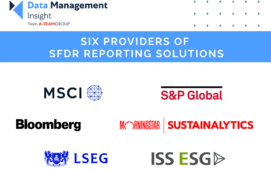Delegates at the FISD’s general meeting in Paris late last month heard about the industry group’s significant involvement in International Standards Organization’s Working Group 11, which released a draft consultation paper in early March as the previous edition of Reference Data Review was going to press.
Working Group 11 (WG11) of Steering Committee 4 (SC4) of the ISO Technical Committee 68 (TC68) was created earlier this year and charged with developing a data model that “provides a single standard for describing a financial instrument throughout its lifecycle.”
In Paris, FISD president Mike Atkin told delegates that FISD – the Financial Information Services Division of the Software & Information Industry Association (SIIA) – was a leading participant in WG11 and one of the drivers of the discussions, which include the creation of a standardized market data vocabulary.
Atkin said ISO was serious about the work of WG11, pointing to the fact that many of the elements required to develop the financial data model were already in place. He pointed to the fact that WG11’s business model approach had already been used by ISO’s WG10 and in the development of the XML edition of the 15022 specification. He also said that the ISO 15022 data field dictionary includes most of the terms associated with transactions required for the data model.
“In addition,” he said, “FISD is contributing the MDDL (Market Data Definition Language) terms, definitions and relationships to the WG 11 process. MDDL has been working toward the creation of a market data vocabulary for some time – and we have a very good starting point (I’d estimate around 80%) already defined.” Finally, Atkin pointed out that FISD, MDDL, FIX, Swift and others industry groups are all sitting at the same ISO table for the first time.
WG11’s aim is to “define the data model components with enough precision to cover the full range of processes and applications.” In its consultation document, the group outlined a matrix that maps the various processes involved in the financial instrument lifecycle to the data types required for set-up of a security master file, pricing for valuation of instruments and maintenance for keeping the two up to date; for example, handling corporate events that may affect an issue and its value.
According to Atkin, the group has identified as many as 20 processes or functional tasks relating to the instrument lifecycle. These include IPO issuance, completing a trade, allocation, clearing, settlement, collateral management, reconciliation, transfer, valuation, performance management and reporting.
“Within Set-up,” he said, “we have identified 10 core characteristics, including security identification, classification, rights and obligations…. Within pricing, we’ve identified eight core characteristics, including time of price, source, status, market…. And for maintain, we’ve identified another eight characteristics including corrections and all sorts of corporate actions categories.”
Subscribe to our newsletter




